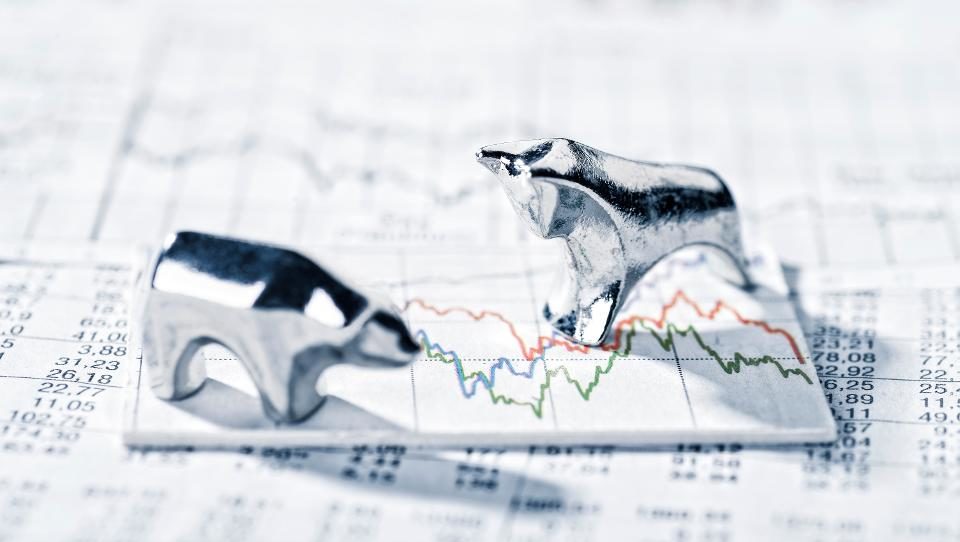
|
|
You might be using an unsupported or outdated browser. To get the best possible experience please use the latest version of Chrome, Firefox, Safari, or Microsoft Edge to view this website. |

A mutual fund is an investing vehicle that owns a portfolio of assets and sells shares to investors. Financial professionals establish mutual funds, manage the assets held by the fund, and attempt to generate returns for their investors. Mutual funds are bought most commonly by people saving for retirement in a 401(k) or individual retirement account (IRA), according to Brendan Willmann, a Certified Financial Planner (CFP) with Granada Wealth Management.
How Do Mutual Funds Work?
When you buy shares of a mutual fund, you’re purchasing a right to a portion of the returns earned by the fund’s portfolio of stocks, bonds and other assets. Mutual means that you split the profits (and the losses) with the other investors in the fund, says Brandon Renfro, a Certified Financial Planner and assistant professor of finance at East Texas Baptist University.
A mutual fund earns dividends and interest from the various investments held in its portfolio. Fund managers can choose to reinvest the profits or distribute them to their investors, depending on their strategy and overall market conditions. When the managers generate capital gains (or losses) by selling assets, they’re also passed on to investors.
Mutual also means that the performance of a mutual fund depends not only on the fund’s manager, but also on the behavior of the investors. When holders sell their mutual fund shares, the fund manager may need to liquidate holdings from the portfolio. The sale of those assets could be ill-timed, resulting in losses for the fund—which may be passed on to the remaining investors.
Mutual Funds and Net Asset Value (NAV)
Net asset value (NAV) determines the price of a mutual fund’s shares. Unlike stocks, bonds or exchange traded funds (ETFs), the price of a mutual fund’s shares doesn’t fluctuate throughout the trading day. Instead, it’s calculated only once a day, after markets close.
Here’s how NAV works: The total value of all assets held by a mutual fund is added up at the close of trading and divided by the number of outstanding shares. NAV can also be referred to as the fund’s closing price, because all orders to buy and sell mutual fund shares are executed at the price determined at the end of the trading day.
Mutual Fund Fees
The cost of owning a mutual fund includes fees, which can vary widely from fund to fund. There are two common fees to watch out for: An annual management fee called an expense ratio, and load fees when you buy and sell mutual fund shares.
According to Renfro, you shouldn’t be surprised to see expense ratios of 1% on actively managed mutual funds. Depending on the mutual fund, the expense ratio pays the following costs:
- Compensation for the managers of the mutual fund.
- The fund’s marketing expenses, officially referred to as 12B-1 fees, which include commissions paid to financial advisors who sell the fund to investors.
- Administrative fees and other operating costs
Not all mutual funds charge load fees—funds that do not charge load fees are called no-load mutual funds. Funds may charge a front-end load fee when you purchase shares, or a back-end load fee when you sell your shares. Load fees vary, but Renfro warns they can be as high as 5.75%.
Mutual Fund Management
A manager or team of managers outline each mutual fund’s goals and manage its investments. Managers have an outsized impact on how funds deliver returns over time—the manager of your mutual fund can make or break your mutual fund investment.
The performance of a mutual fund manager is measured against a benchmark index. For example, the manager of a large-cap equity fund would attempt to beat the annual return on the S&P 500. Exceeding the annual returns of the benchmark is how fund managers justify their fees.
Active vs Passive Mutual Funds
Actively managed mutual funds have managers that make every decision related to the fund’s holdings. They choose investments and make trades based on the fund’s criteria, which are outlined in its prospectus. These criteria govern the fund’s asset allocation and investment concentration (i.e., large cap value stocks). Due to the work involved, actively managed mutual funds are more expensive to own.
Passively managed mutual funds are known as index funds, which track a specific index like the S&P 500. Typically an index fund is only rebalanced when a component company or security is added to or removed from the index the fund tracks. Since there is less work involved for fund managers, passively managed index funds are cheaper to own.
There is a long-standing debate about whether it’s better to buy actively managed mutual funds or passively managed mutual funds. You might take comfort in owning actively managed funds with more involvement by fund managers. However, be aware that as markets rise and fall, the managers are strictly bound to the fund’s criteria, and they may be compelled to make adverse trading decisions.
There’s no guarantee you’ll see increased returns on investment when opting for an actively managed mutual fund. In fact, actively managed funds often lag passively managed funds after accounting for higher fees. The year-end 2019 SPIVA report from S&P Global found that 89% of actively managed large-cap mutual funds, 84% of mid-cap mutual funds and 89% of small-cap funds underperformed their respective passive indexes.
How to Choose Mutual Funds to Invest In
The first step when choosing a mutual fund is to understand your investment goals and preferences. Evaluate your risk tolerance, or how aggressively or conservatively you want to pursue growth and returns, and then choose a mutual fund with an investment approach that fits your risk tolerance.
For example, if you’re an aggressive investor with a high risk tolerance, you may want to look at mutual funds that invest in emerging market stocks. If you’re a conservative investor with less risk tolerance, you may want to check out mutual funds that invest in low-risk government bonds.
Consider whether your risk tolerance is better served by an actively or passively managed mutual fund. If you decide to go with an actively managed mutual fund, determine whether the potential for higher fees is worth it, advises Willmann.
How to Discover and Compare Mutual Funds
Once you understand your investing strategy, it’s time to assess your mutual fund options. There are many fund screeners available online that allow you to discover and research mutual funds. Fidelity offers a screener that lets you search for mutual funds by asset class or risk profile. Your 401(k) or IRA provider may provide you with a list of mutual fund options that you can buy in your account.
Once you’ve found several funds that match your investing preferences, Renfro advises you to read the fund prospectuses for due diligence and to ensure the fund’s goals align with your own. Each prospectus includes a review of the assets held by the fund and how it adjusts asset allocations.
Both Renfro and Willmann are skeptical about relying too much on past fund performance to help choose a mutual fund. They caution that there is no guarantee that previous results will be replicated. Willmann also notes that the fund manager can change over time, which can impact performance.
Mutual Funds and Diversification
Mutual funds can offer built-in diversification. However, it’s a good idea to buy more than one. If you were to invest in only a single mutual fund that invests in one particular asset class, your market exposure would be limited.
Renfro encourages investors to buy mutual funds for each asset class that you would like to have in your portfolio. In addition, owning multiple mutual funds gives you greater control over your portfolio. You can make changes in response to shifts in the market or your own personal needs.
Types of Mutual Funds
There are mutual funds that invest in nearly every possible asset class and market segment. Here are the main types of mutual funds:
- Money market funds: Low-risk mutual funds that invest in money markets.
- Bond funds: These funds invest in corporate or government debt and are oriented toward generating income.
- Equity funds: Higher-risk stock investments that can generate greater returns. They can be focused on large-cap, mid-cap or small-cap stocks.
- Balanced funds: A blend of stocks and bonds that attempt to balance income and growth.
- Index funds: Passively managed mutual funds that attempt to duplicate the performance of an underlying index, such at the S&P 500.
- International funds: These funds invest in overseas assets to provide more diversification.
- Specialty funds: Industry specific funds offer targeted diversification, but may also come with higher risk.
- Target date funds: A complete portfolio of investments that adjusts its mix of stocks and bonds over time for investors with a target date for retiring.
ETF vs Mutual Fund: What’s The Difference?
There are similarities between ETFs and mutual funds: Both accumulate portfolios of assets and sell shares to investors, and both offer easy diversification. But their differences are perhaps more important: Mutual funds profit directly from their portfolios, whereas ETFs try to duplicate the performance of their underlying assets.
Another core difference between ETFs and mutual funds is how they are traded. As noted above, mutual funds are priced and traded only once a day, at the market close. ETF shares are bought and sold on exchanges throughout the trading day, similarly to stocks, where their share prices fluctuate constantly. Furthermore, ETFs are typically cheaper to own than mutual funds, with many having expense ratios lower than 0.1%, says Renfro.










